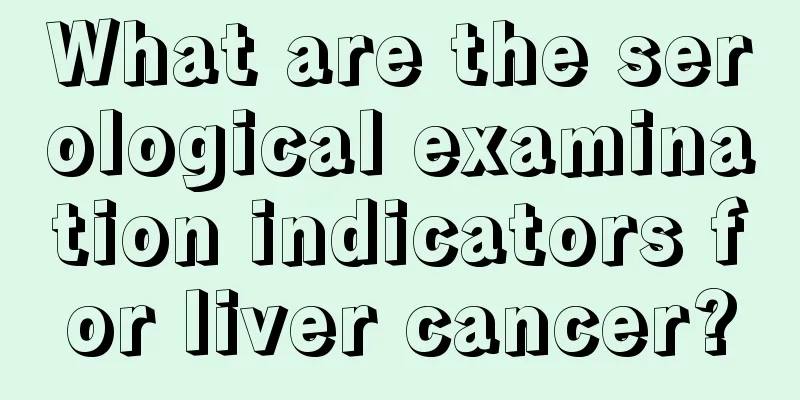What are the serological examination indicators for liver cancer?

|
Serological examination is a routine examination for liver cancer, and its examination indicators include the following aspects. Isoferritin (AIF): Isoferritin is of certain significance in the diagnosis of liver cancer because the synthesis of liver cancer cells increases and the release rate accelerates. The normal value is 16μg/L to 210μg/L, and 300μg/L is the diagnostic threshold. 72.1% of liver cancer patients exceed this value, and the false positive rate is 10.3%. The positive rate of liver cancer with negative or low concentration of AFP is 66.6%, and the positive rate of small liver cancer <5cm is 62.5%. Alpha-fetoprotein heterogeneity (FucAFP): Currently, the diagnostic value of AFP heterogeneity determined by lentil agglutinin (LCA) affinity cross-immunoautography is high. There are two heterogeneities, namely LCA non-binding type (AFP-NL) and binding type (AFP-RL). Liver cancer contains an average of 49.13±27.20% (0-100%) AFP-NL, and <75% is the diagnostic standard for liver cancer. The positive rate is 86.0%, which decreases as the disease worsens. The AFP-NL of non-cancerous liver disease is 93.30±7.66%, and the false positive rate is 1.6%. Aldolase isoenzyme A (ALD-A): When ALD-A appears and increases to >800ng/ml in liver cancer, it is helpful for diagnosis. The positive rate of AFP-negative liver cancer is 73.6%. Serum fucosidase (AFu): AFu belongs to the lysosomal acid hydrolase class, and its main physiological function is to participate in the degradation and metabolism of bioactive macromolecules such as fucosylated glycoproteins and glycolipids. Primary liver cancer should be considered when AFu exceeds 110Kat/L. Domestic reports show that the positive rate of AFu in diagnosing primary liver cancer is 81.2%, and the positive rates for AFP-negative liver cancer and small liver cancer are 76.1% and 70.8% respectively. Secondary liver cancer and benign liver space-occupying lesions are negative, but the false positive rate of cirrhosis and chronic hepatitis is high. In summary, the above liver cancer markers have auxiliary significance in the diagnosis of primary liver cancer, especially AFP-negative cases. |
<<: Symptoms and characteristics of early primary liver cancer
>>: Several types of common hereditary kidney cancer
Recommend
What to do if the toothpick breaks in the card slot
More and more people are using mobile phones now,...
Sore throat while breastfeeding? This kind of diet is better than taking medicine!
When you enter the breastfeeding period right aft...
What are the things that boys should pay attention to during their development?
Parents all hope that their children will develop...
What to do if you sprain your back
When we are exercising or moving things, if we ar...
What are the early symptoms of ascending colon cancer and its cure rate?
Early symptoms of ascending colon cancer: 1 Early...
Can you get pregnant if you have bone cancer?
Can you get pregnant if you have bone cancer? Onc...
Symptoms of subacute granulomatous thyroiditis
Subacute granulomatous thyroiditis often occurs i...
What are the MRI manifestations of prostate cancer
MRI mainly relies on T2-weighted images to detect...
How long is the best time to soak your feet in Chinese medicine
Traditional Chinese medicine is a type of medicin...
Can I eat Commelina if I have skin allergies?
There are blue flowers on the leaves of Commelina...
Causes and prevention of skin cancer
Skin cancer refers to a malignant tumor that occu...
Analysis of epidemiological characteristics of rectal cancer
Rectal cancer is one of the most common digestive...
Will using hair removal cream cause body odor?
Many female friends who love beauty will use depi...
Exposing your hair to the sun makes it brittle and easy to fall out. 8 bad habits that damage your hair quality
Under the scorching sun, people all know to wear ...
What happens if I haven’t had a bowel movement for several days?
Normally, we will have a bowel movement once a da...









